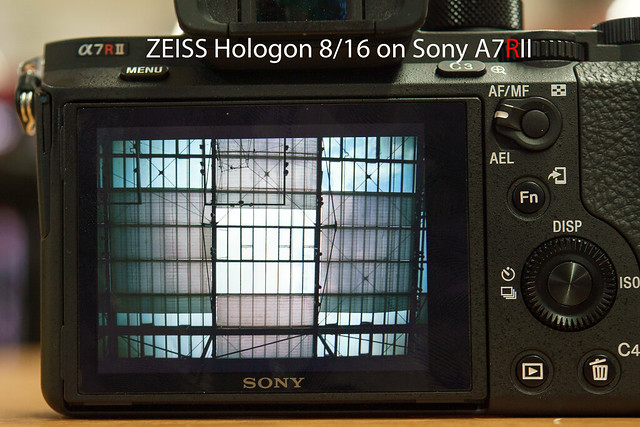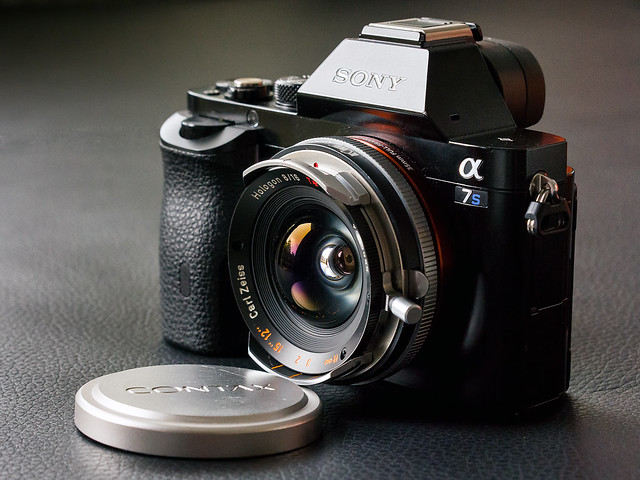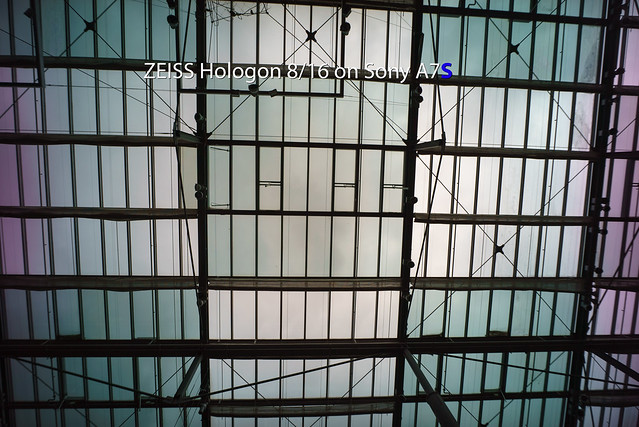25.07.2015 - Today I had the chance to get my hands on the upcoming and extremely promising Sony A7R II and I would like to share some information that may not all have been adressed so far.
Sensor
Of course the new 42.4 MP BSI (back side illuminated) sensor is the biggest improvement, providing higher resolution with a well balanced sensivity that may have been increased as well compared to the A7R - I would estimate an advantage of about 0.5 stops. In the past 1,5 years there was a lot of discussion all around the internet about disappointing results with symmetrically designed legacy wide angle lenses especially with M-mount lenses from Leica, Zeiss and Voigtlander. Most articles came to vague conclusions, many of them ignoring that there were also quite well working lenses like the Leica WATE (3D-Kraft was the first site reporting positive results for that lens).
The new BSI sensor design not only gives more light to each photo diode, it also brings these diodes closer to the surface which means less light fall off for oblique projected rays of light. As they also get closer to the bayer filter pattern, my assumption is that this sensor will produce far less color shift towards the borders.
In order to prove my assumption, I tested the A7RII with the most extremely designed ultra wide angle lens that I know at the moment: The ZEISS Hologon T* 8/16 (originally designed for Contax G cameras). If you want to know more about this optical oddity, I recommend to take a look at this article: http://www.thephoblographer.com/2013/10/12/the-top-five-most-extreme-wide-angle-lenses-ever-built
This is, how this lens looks on a Sony A7S:
Warning: If you want to adapt this lens to the Sony Alpha series, you MUST choose a model that is capable for the full electronic (silent) shutter (at the moment only A7S and A7RII) and of course you must activate that mode. The reason is that the rear lens element is so close to the sensor, that the mechanical shutter will hit it which may cause malfunction. You should also take off that lens befory switching off the camera because the camera sporadically shoots a "dark frame" when it gets switched off in order to map out hot pixels.
Although the Sony A7S already causes far less problems (like color shift) with symmetrically designed wide angle lenses, the Zeiss Hologon still isn't really usable for color photos on that camera as it produces strong color shift also on the A7S:
(The image above was taken using the additional gradation filter for the Hologon on A7S in order to reduce vignetting towards the edges)
Now I wanted to check which indication can be given from a preproduction sample of the Sony A7RII. As it was not allowed to insert my own SD card, there was only permission to take a snapshot from the camera display:
As you can see from the example above, it was not taken at exactly the same conditions because some of the sun protection curtains where opened right after this shot and the sample from the A7S was taken shortly after that moment. Anyway: What you see on the display looks very promising for legacy lens collectors! It gives strong indication that the sensor of the new Sony A7RII has no problem with magenta color shift at the borders anymore. It also looked like the borders were less blurred compared to the sample from the A7S.
Shutter
The completeley new designed shutter allows electronic first curtain shutter to reduce shake and sounds less clunky. Like the A7S, the A7RII also provides a completely silent electronic shutter. The mechanical shutter is specified for a life time of 500.000 actuations.
Stabilization
The 5-axis in body image stabilization seems to work very efficient as far as the demonstration could indicate. In combination with OSS lenses, it gives three additional axis stabilization. The downside is an increase in the body size and weight (by approx. 150g).
Auto Focus
The hybrid auto focus uses 399 phase detection pixels distributed across a large amount of the sensor surface. It covers a far larger area than the sensor of the A7II and seems to be significantly improved when used to track objects (also in AF-C mode). The demonstration showed also the use of A-mount lenses (with LA-EA 3 adapter) and a canon lens focusing quite fast. The question if this combination also supports hybrid (phase detection + contrast) auto focus could not be answered. It will propably depend on what the adapter manufactures can implement in future releases of their adapter firmware.
EVF
Still the 2.4 M dot OLED module but with a significantly better and larger projection to your eye.
Video
You may already have noticed that it has similar features (video modes, picture profiles etc.) compared to the A7S but now it provides internal 4K recording to fast SDXC cards with up to 100 Mbps. Main difference is that it has no full sensor readout in full frame 4K mode but on the other hand, it generates the 4K in Super-35 mm mode from a 15 MP full read out, which may provide even better image quality in 4K mode compared to the A7S as long as you can record in good light conditions. S-Log2 now can be recorded with a base ISO of 800 on the other hand the A7S will still be the king for low light video applications.
The HDMI output can also deliver clean 4K (8bit 4:2:2) but at the moment it is unclear if it can also be connected to devices that accept only FullHD signal during internal 4K recording. I hope I can follow up with an answer soon.
Minor Improvements:
You can embed copyright information in the RAW and JPEG files. Minimal shutter in Auto ISO now can be customized. Additional button mapping features (e.g. for the video REC button). In playback mode, the camera will automatically zoom into the AF point (which means that this information is stored in the image as well). You can use the camera also when connected to external power (via USB port) which offers new options for long runtime applications. You can combine self timer with the shooting of sequences.
Release date in Germany is currently advised for the 5th August 2015. Stay tuned to see more from this "Über-camera".






